Catégories
Documents disponibles dans cette catégorie (30)
 Ajouter le résultat dans votre panier Affiner la recherche
Ajouter le résultat dans votre panier Affiner la recherche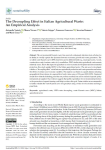
Article
A. Vastola ; M. Viccaro ; V. Grippo ; F. Genovese ; S. Romano ; M. Cozzi |The environmental Kuznets curve has received widespread attention from scholars for its ability to vividly capture the dynamics between economic growth and waste generation. The so-called waste Kuznets curve (KWC) has been used in different fiel[...]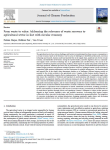
Article
The agricultural sector faces various challenges and barriers in transitioning from linear resource consumption to a circular economy. Based on the literature, four key areas of challenges are identified and discussed, conversion technology and [...]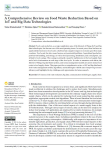
Article
S. Ahmadzadeh ; T. Ajmal ; R. Ramanathan ; Y. Duan |Food waste reduction, as a major application area of the Internet of Things (IoT) and big data technologies, has become one of the most pressing issues. In recent years, there has been an unprecedented increase in food waste, which has had a neg[...]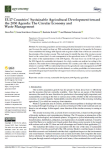
Article
An increasing population and increasing industrial demand for resources has created a need to ensure the supply can keep up. With sustainable development on the agenda, the European Union established the strategy 2030 Agenda with set goals to fu[...]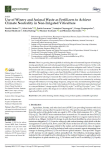
Article
V. Litskas ; A. Ledo ; P. Lawrence ; A. Chrysargyris ; G. Giannopoulos ; R. Heathcote ; A. Hastings ; N. Tzortzakis ; M. Stavrinides |There is a growing interest globally in reducing the environmental impacts of farming by reusing agricultural waste and reducing agricultural greenhouse gas (GHG) emissions. In this work, the potential of Mediterranean viticulture for GHG emissi[...]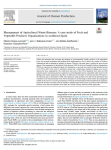
Article
Policies and strategies that encourage the adoption of environmentally friendly practices in the agricultural sector also promote mechanisms that facilitate their implementation. One of them is the creation of Producer Organizations and the gran[...]
Article
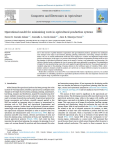
Article
Due to the increase of global demand of agriculture and agro-industrial products, agriculture has undergone some changes in the stages of procurement, planning, planting, maintenance, harvesting, transport and distribution. The use of formal mat[...]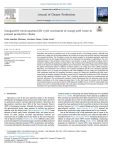
Article
Agriculture has become an essential sector in the economic growth of developing countries. Although food production at a large scale is the primary purpose, the residues are in some cases not fully exploited, representing environmental problems.[...]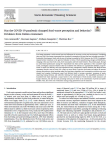
Article
V. Amicarelli ; G. Lagioia ; S. Sampietro ; C. Bux |Food waste represents a multi-sectoral issue and influences the economy, society and environment. Considering that over 50% of food waste is generated from household consumption, the issue has been included among the 17 Sustainable Development G[...]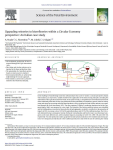
Article
A. Ncube ; G. Fiorentino ; M. Colella ; S. Ulgiati |In the challenge of transforming waste into useful products that can be re-used in a circular perspective, Italian wine industry can represent a suitable model for the application of the bioeconomy principles, including the valorisation of the a[...]
Article
About 30% of food produced globally is lost or wasted along the food supply chain. In this sense, the objective of this research is to identify and systematize scientific publications relating food losses and wastes with solutions based on the c[...]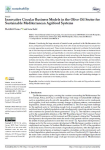
Article
Considering the large amounts of harmful waste produced in the Mediterranean olive sector, entrepreneurial initiatives creating value from olive waste and by-products via circular bio-economy approaches are reviewed. These circular business mode[...]
Série

Article
Food systems are driven by incentives that often lead to food being discarded before entering the market and to the degradation of natural resources. Vegetable production in the water-scarce province of Almería, Spain, illustrates this and highl[...]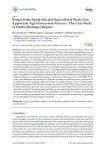
Article
E. Tamburini ; M. Gaglio ; G. Castaldelli ; E.A. Fano |Agro-ecosystems are intensively exploited environments which are both providers and consumers of ecosystem services. The improvement of both provisioning and regulating services in cultivated landscapes is crucial for the sustainable development[...]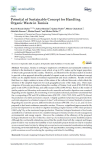
Article
N.E.H. Chaher ; S. Hemidat ; Q. Thabit ; M. Chakchouk ; A. Nassour ; M. Hamdi ; M. Nelles |Nowadays, Tunisia is seeking to implement cost-efficient and sustainable solutions in relation to the treatment of organic waste which, at up to 65%, makes up the largest proportion of total waste generated in the country. Therefore, an efficien[...]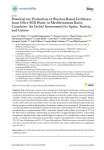
Article
E.A.N. Marks ; V. Kinigopoulou ; H. Arkout ; A.A. Azzaz ; C. Doulgeris ; S. Jellali ; C. Rad ; P. Sanchez Zulueta ; E. Tziritis ; L. El-Bassi ; C. Matei Ghimbeu ; M. Jeguirim |Olive mill wastes continue to be a management challenge due to the large volumes produced, particularly due to their toxicity and impacts on the environment. Thermal conversion through pyrolysis or hydrothermal carbonization techniques can detox[...]
Article
For decades, non-renewable resources have been the basis of worldwide economic development. The extraction rate of natural resources has increased by 113% since 1990, which has led to overexploitation and generation of vast amounts of waste. For[...]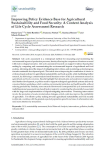
Article
O. Gava ; F. Bartolini ; F. Venturi ; G. Brunori ; A. Pardossi |Life cycle assessment is a widespread method for measuring and monitoring the environmental impacts of production processes, thereby allowing the comparison of business-as-usual with more ecological scenarios. Life cycle assessment research can [...]
Article
C. Bas-Bellver ; C. Barrera ; N. Betoret ; C. Barrera ; L. Segui |Current food transformation processes must face the food waste issue by developing valorization processes to reintroduce by-products in the economic cycle and contribute to circular economy, generating social and economic value, and ensuring per[...]
Article
M. Pergola ; A. Persiani ; V. Pastore ; A.M. Palese ; C. D'Adamo ; E. De Falco ; G. Celano |Horticultural farms are faced with the problem of disposing of huge amounts of agricultural by-products whose management requires sustainable solutions. Composting means to recycle organic waste to make compost—a high agronomic value product—abl[...]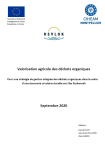
Rapport, Expertise, Working Paper
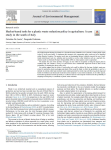
Article
The 2018 European Strategy for Plastics in a Circular Economy identifies a set of actions to reduce plastic waste in the EU in the near future. To implement this strategic view, appropriate policy tools need to be identified within Member Countr[...]
Article
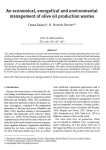
Article
This study evaluates the technical, economic and environmental results of energy exploitation from the waste of olive oil production. A case study of olive processing wastes was carried out for the fossil fuel substitution running scenario. The [...]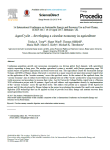
Article
T.A. Toop ; S. Ward ; T. Oldfield ; M. Hull ; M.E. Kirby ; M.K. Theodorou |Continuing population growth and increasing consumption are driving global food demand, with agricultural activity expanding to keep pace. The modern agricultural system is wasteful, with Europe generating some 700 million tonnes of agrifood (ag[...]
Ouvrage
L. Parrot, coord. ; A. Njoya, ed. ; L. Temple, ed. ; F. Assogba-Komlan, ed. ; R. Kahane, ed. ; M. Ba Diao, ed. ; M. Havard, ed. | Paris [France] : L'Harmattan | Ethique Economique, ISSN 1639-1306 | 2008
Thèse, Mémoire, Master
A.M. El Hassan | 1993Au cours des deux dernières décennies, le déficit en biomasse au Soudan est devenu critique. Pour tenter de le réduire, un projet national d'utilisation des déchets agricoles comme source d'énergie domestique (briquettes de tiges de coton carbon[...]
Communication à un Congrès (avec Actes)
J.-L. Tisserand | Montpellier [France] : CIHEAM-IAMM | Options Méditerranéennes : Série A. Séminaires Méditerranéens, ISSN 0253-1542 | 1990Sans négliger l'alimentation humaine (autoconsommation), l'élevage dans l'oasis est surtout une source de fumure et de travail. L'alimentation constitue le principal frein au développement de l'élevage dans l'oasis dans oublier les troupeaux viv[...]










